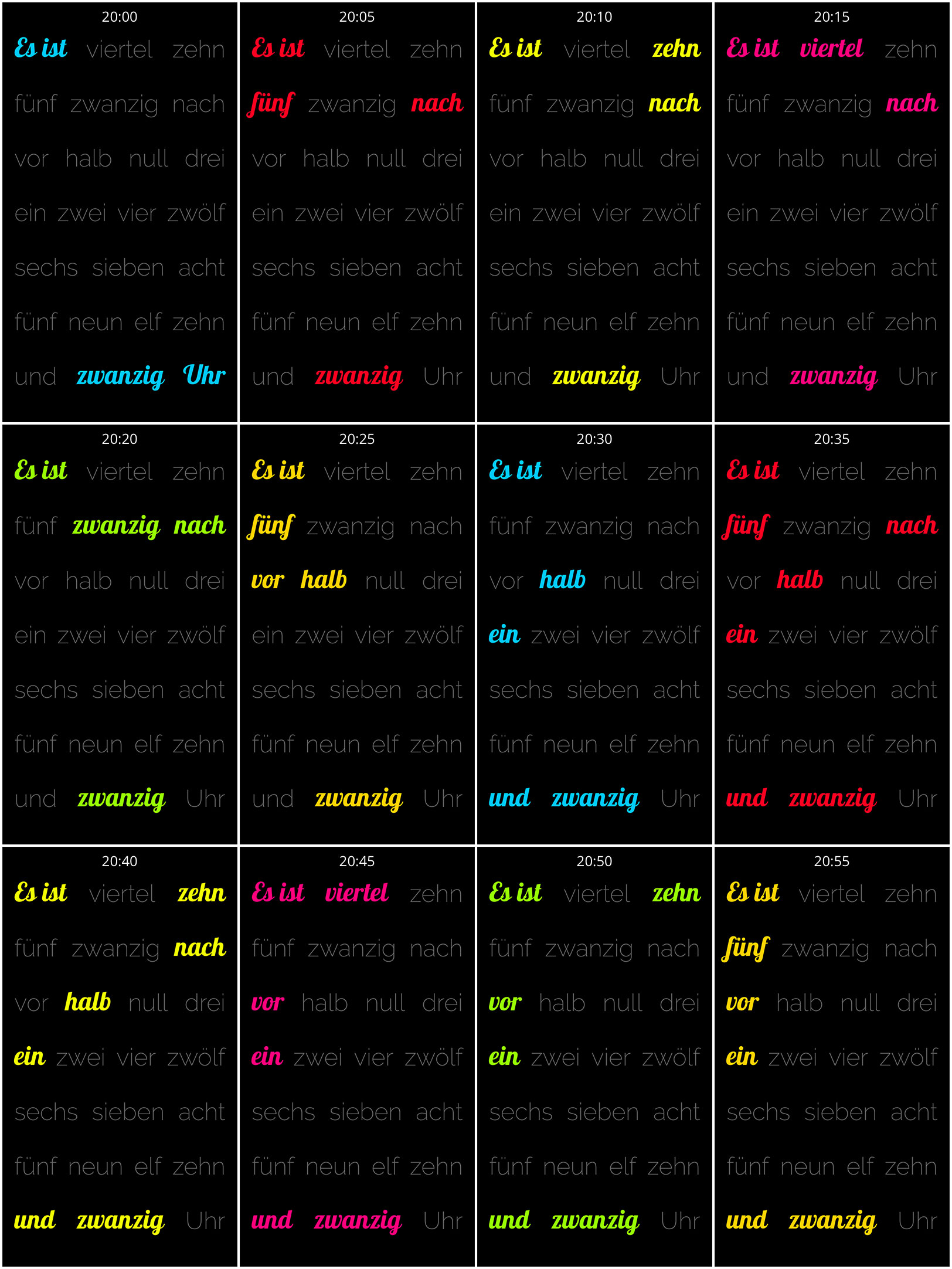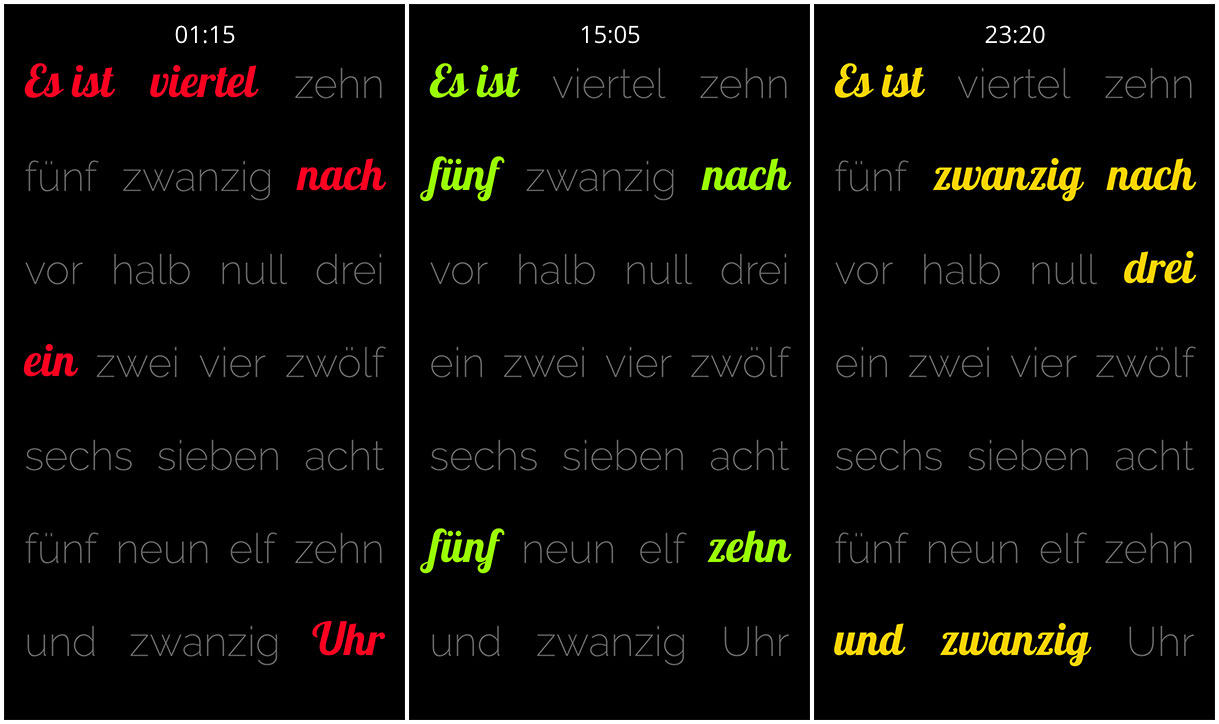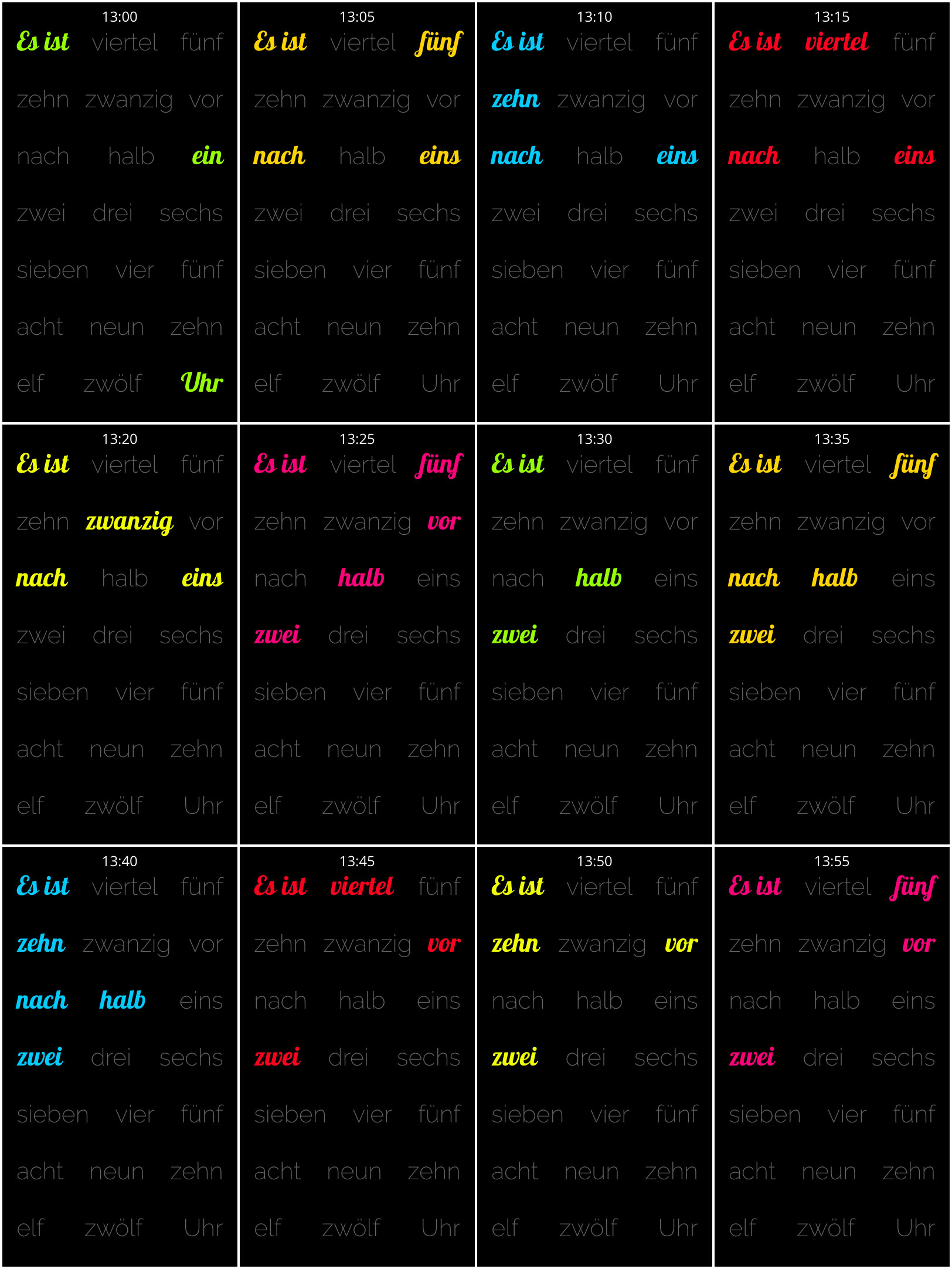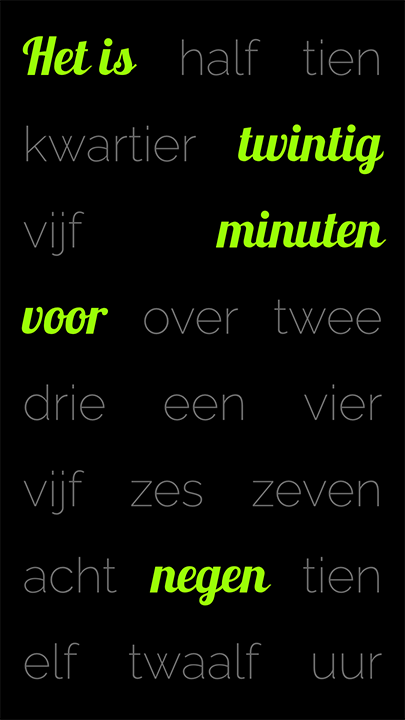Read the statement by Michael Teeuw here.
Help Translating Word Clock
-
@clubbi Thank you! I’ll be adding this tonight along with a French translation.
One question: I notice a small difference in the first example:
It’s five minutes past one -> Es ist fünf nach eins (more common) / Es ist fünf nach ein Uhr
in the second example, there is no “s” at the end on “ein”. Does this mean when it’s on the hour (e.g.: 1:00) one would say “Es ist ein Uhr”, but when the word “Uhr” is not used, there is an “s”? (e.g.: “Es ist fünf nach eins”). Is the case for any other hours? I noticed it wasn’t for “Es ist fünfunfzwanzig Minuten vor zwei”
Also, is “Uhr” always capitalized? e.g.: would “Es ist elf uhr” be incorrect?
Cheers!
-
@j.e.f.f In German the additional “s” is only relevant for the number 1. So without “Uhr” the “s” is required and with a sentence with “Uhr” the “s” must be omitted.
“Uhr” is always capitalized. So your example “Es ist elf uhr” is incorrect. -
@clubbi @willfri OK here’s my attempt at making a German translation:
There were complications with having both “ein” and “eins” in the grid. So to avoid a special code case, for all times from 01:00 through 01:55, I always end with the word “Uhr.” I don’t do this for any other hours though… should I?
I took some creative license with displaying hours 13:00 through 19:00, as well as hours 21:00 through 23:00.
See both screenshots below for examples, and let me know if my translation works.


-
@j.e.f.f
First of all, German is not my main language, but there are some things I see.- 20:25 “Es ist fünf vor halb zwanzig” should be “Es ist fünf vor halb neun”, I would never use the “zwanzig” wenn I write the time like this or speak about the actual time.
- 20:30 is now written as “Es ist halb ein und zwanzig”. I think that has to be like in Dutch “Es ist halb neun”. Dutch and German look a lot the same.
- 20:35 schould be “Es ist fünf nach halb neun”
- 20:40 schould be “Es ist zehn nach halb neun”
- 20:45 schould be “Es ist viertel vor neun”
- 20:50 schould be “Es ist zehn vor neun”
- 20:55 schould be “Es ist fünf vor neun”
The use of “zwanzig” is strange in my opinion, but let some German speaking users decide how they want it to be.
-
@pjkoeleman it was my impression based @clubbi 's translation suggestion that the clock should show 24 hour time, which is why it is laid out as such.
@clubbi @willfri should this be a 24 hour clock or a 12 hour? Also note that it’s possible to have layouts for both styles, so I could add a German 12 hour clock in addition to keeping the current 24 hour layout.
-
@j.e.f.f How @pjkoeleman said I would also prefer a 12 hour layout because all times after 12 sounds strange in German.
Use “Uhr” only when it’s xx:00. The example at 01:15 should be “Es ist viertel nach eins”. So it would be better if you could find a solution for “ein” and “eins” because it sounds much better.
Some examples for better understanding:
- 00:30/12:30 “Es ist halb eins”
- 01:00/13:00 “Es ist ein Uhr” (use “ein” only here)
- 01:05/13:05 “Es ist fünf nach eins”
- 01:15/13:15 “Es ist viertel nach eins”
-
@willfri Thanks! A twelve-hour clock is easier for me to layout as well, so it looks like I’ll go that route. I’ve been thinking about a good way to handle the “s” on the end of “ein” and I think I have a good solution in mind that won’t be a special case just for the German layout.
I’ll post back new screenshots when I make the change.
-
@willfri OK. Here is the German layout, now using a 12 hour clock. I have it properly displaying
ein/eins" in context.Question: Since we’re using 12 hour time instead of 24, is it customary to specify what part of the day it’s in? For example, in the French translation, it would say “Il est cinq heures du matin,” or “It’s five o’clock in the morning.” Similarly you’d append “de l’après midi” for the afternoon, and “du soir” for in the evening.

-
@j.e.f.f
I think that is awesome, for a Dutch person. -
@j.e.f.f said in Help Translating Word Clock:
Question: Since we’re using 12 hour time instead of 24, is it customary to specify what part of the day it’s in? For example, in the French translation, it would say “Il est cinq heures du matin,” or “It’s five o’clock in the morning.” Similarly you’d append “de l’après midi” for the afternoon, and “du soir” for in the evening.
I’m not sure if it’s needing. In German it would be
- Night: “Es ist zwei Uhr nachts”
- Morning: “Es ist sieben Uhr morgens”
- Afternoon: “Es ist drei Uhr nachmittags”
- Evening: “Es ist neun Uhr abends”
But for the other times without “Uhr” it sounds in my opinion wired: “Es ist viertel nach zwei nachts”
I don’t know how other German people see it.


